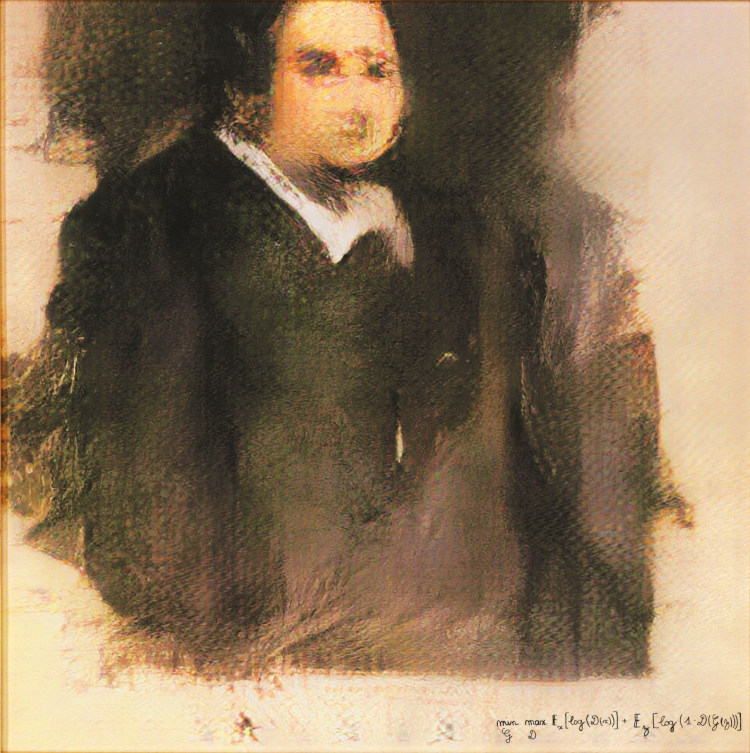
Today’s smartphones surely can accomplish a lot, but is creativity within the reach of Artificial Intelligence (AI)? Or, are the acts of creativity, like making a painting that profoundly speaks to an audience, only a feature of human cognition and intelligence? Take a look at this painting. You may be surprised to learn that it was created by AI. The painting is called Edmond de Belamy and was in 2018 the first painting created by AI to be featured in a Christie’s auction. Is this painting, along with similar AI generated images, like the ones from Google’s Deep Dream Generator or the Crypto AI art by Montreal.AI, tokens of creativity? And what about the ingenious moves made by Google Deep Mind’s chess machine AlphaZero? Should they also be considered as examples of artificial creativity? The debated question of the existence of artificial creativity often leads to a discussion about the properties of human creativity. Could human creativity be replicated in AI, or at least imitated? Or do we need another definition of creativity to describe seemingly innovative actions made by AI? These are topics I will cover in a short blog series this summer.
During the last ten years AI has come to everyone’s attention. As a research field, however, AI is much older, and the term Artificial Intelligence was in fact invented as early as in 1955 by the mathematician John McCarthy and co-workers as they planned a research project at Dartmouth College for the summer 1956 . In the proposal for funding of the summer school it is written:
The study is to proceed on the basis of the conjecture that every aspect of learning or any other feature of intelligence can in principle be so precisely described that a machine can be made to simulate it.
Among the aspects of learning and intelligence discussed in the Dartmouth proposal were the topics of language processing, artificial neural nets and abstraction. All these are central aspects of AI research and development today. However, McCarthy & co also mentioned another important aspect of human intelligence, which during the 65 years since the summer seminar in Dartmouth has earned less attention in the AI community, namely creativity. Creative problem solving is often regarded as an important characteristic of human intelligence. In the proposal it is also stated:
A fairly attractive and yet clearly incomplete conjecture is that the difference between creative thinking and unimaginative competent thinking lies in the injection of some randomness. The randomness must be guided by intuition to be efficient. In other words, the educated guess or the hunch include controlled randomness in otherwise orderly thinking.
Obviously McCarthy and his colleagues had a hunch themselves as to how to address Artificial Creativity (AC) and planned to solve these matters in no-time, more or less having a computer program ready by the end of the two month seminar in 1956. It turned out to be a bit more difficult. Today, almost seven decades later, we may ask how far we’ve come to reach McCarthy’s goal of creating AC? Are we anywhere close, or are we still far off?
Before we can explore the present status and the future potentials of AC, we need a better understanding of human creativity. Only then can we approach an answer to the question of whether the human creative process can be replicated, or at least simulated in computers, at all. Alternatively we may perhaps end up concluding that computers can indeed show creative behaviour, but where it is necessary to define ‘creativity’ differently for computers than for humans, similarly to how ‘intelligence’ is quite differently understood when it comes to human and artificial intelligence.
In a short series of blog posts appearing this summer I will dig into these matters using the framework of statistics as a tool for understanding the controlled randomness of creativity. This framework will also provide a natural basis for discussing the prospects of artificial creativity. In the next post, Insight and Fancy – the legacy of David Bohm, to appear soon, I will start exploring human creativity using the insights of the physicist and philosopher David Bohm. The series will continue with the post The stochastics of divergent thinking, followed by Bending, blending and breaking biases. In the final blog post On artificial creativity I will return to the question that I started this introductory blog post asking, Will Apple Siri ever shout Eureka?. There I will explore the prospects of AC in light of the statistical view of human creativity established in the previous blog post.
I hope you will enjoy the series!


